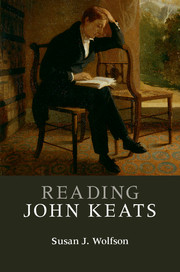Book contents
- Frontmatter
- Dedication
- Contents
- List of figures
- Preface
- Acknowledgments
- Note on the texts
- List of abbreviations
- 1 Life and times
- 2 Conceiving early poems, and Poems
- 3 Falling in and out of love with Endymion: A Poetic Romance; rereading King Lear
- 4 Venturing “new Romance”: Isabella; or, The Pot of Basil. A STORY FROM BOCCACCIO
- 5 Falling with Hyperion
- 6 Still Romancing: The Eve of St. Agnes; a dream-sonnet; Labelle dame
- 7 Reforming the sonnet and forming the Odes of spring 1819: Psyche; Nightingale; Grecian Urn; Melancholy; Indolence
- 8 Writhing, wreathing, writing Lamia
- 9 Falling in Fall 1819: The Fall of Hyperion and To Autumn
- 10 Late poems & lasting Keats
- A few famous formulations
- At a glance: Keats in context
- Notes
- Further reading
- Index
6 - Still Romancing: The Eve of St. Agnes; a dream-sonnet; Labelle dame
Published online by Cambridge University Press: 05 June 2015
- Frontmatter
- Dedication
- Contents
- List of figures
- Preface
- Acknowledgments
- Note on the texts
- List of abbreviations
- 1 Life and times
- 2 Conceiving early poems, and Poems
- 3 Falling in and out of love with Endymion: A Poetic Romance; rereading King Lear
- 4 Venturing “new Romance”: Isabella; or, The Pot of Basil. A STORY FROM BOCCACCIO
- 5 Falling with Hyperion
- 6 Still Romancing: The Eve of St. Agnes; a dream-sonnet; Labelle dame
- 7 Reforming the sonnet and forming the Odes of spring 1819: Psyche; Nightingale; Grecian Urn; Melancholy; Indolence
- 8 Writhing, wreathing, writing Lamia
- 9 Falling in Fall 1819: The Fall of Hyperion and To Autumn
- 10 Late poems & lasting Keats
- A few famous formulations
- At a glance: Keats in context
- Notes
- Further reading
- Index
Summary
But let me laugh awhile, I've mickle time to grieve: The Eve of St. Agnes
– so sighs old beldame Angela, accessory to a young knight's romantic adventure on a winter night (XIV). As if in recoil from the exhaustion of Hyperion, Keats found himself writing The Eve of St. Agnes in late January 1819, on a vacation from London, during which he may have had a light romantic affair. Its Spenserian stanzas are at once homage to The Faerie Queene (The Eve has a medieval décor) and a display of intricate poetic skill. Its nine lines rhyme ababbcbcc are iambic pentameter (a ten-syllable line), except for the final line, which is a hexameter (six iambs). The rhymes are artfully interwoven, with two opportunities for making the most of couplet rhymes (for close relations of sound and sense) and with the final line offering an opportunity for medial caesura (a pause in the syntax half way through). Keats is also mindful of a spectacular modern-retro site of this stanza, Byron's Childe Harold's Pilgrimage, A Romaunt (1812), which turned the stanza into an energetic serial extravaganza. Childe Harold Canto III appeared in 1816 and Canto IV, the last, in 1818, each installment an astonishing success. “I was surprised to hear from Taylor the amount of Murray the Booksellers last sale – what think you of £25,000? He sold 4000 coppies of Lord Byron,” Keats writes to George and Georgiana in February 1819, about Canto IV. Having this news from his own publisher must have been hard, especially in tandem with the report, “I have not gone on with Hyperion” (L 2:62). What Keats could go on with was “new romance” – not only from aptitude but also on the pulse of the market.
The Eve of St. Agnes summons a rather severe history: this patron saint of young virgins was a thirteen-year-old Christian martyr (fourth century), saved by a miracle of storm and lightning from a brutal sentence of gang rape in the brothels on the eve of her execution.
- Type
- Chapter
- Information
- Reading John Keats , pp. 72 - 86Publisher: Cambridge University PressPrint publication year: 2015



